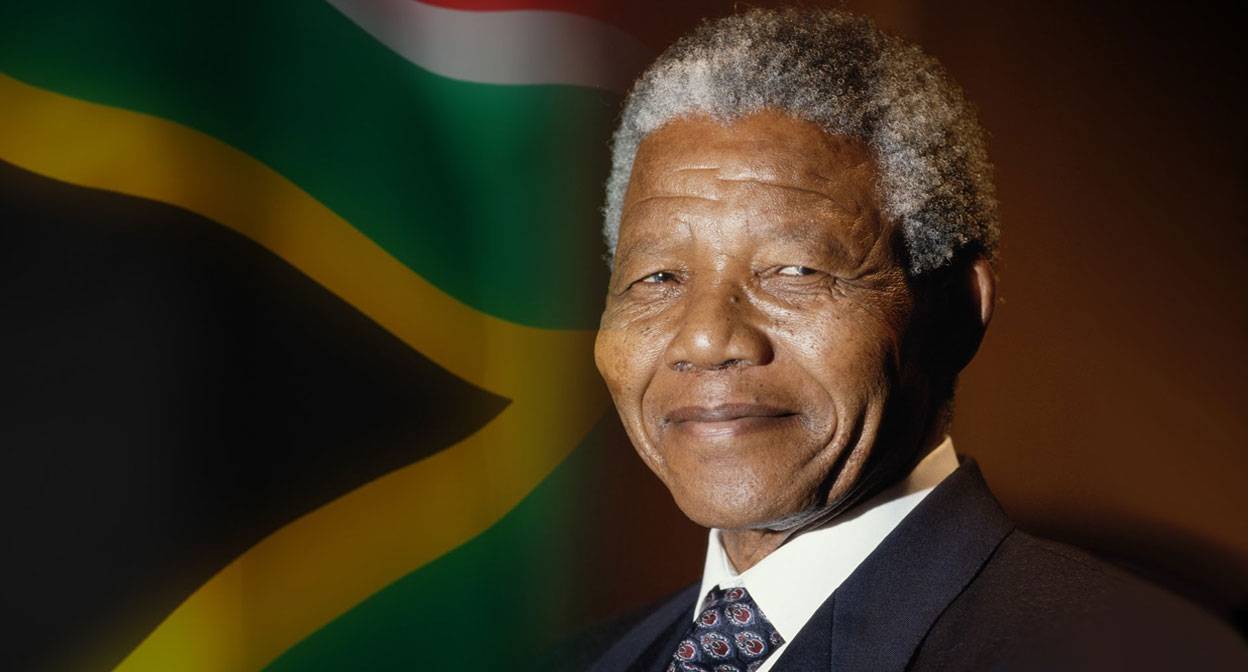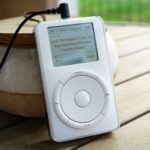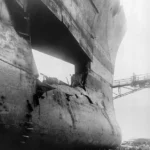Nelson Mandela’s journey from prisoner to president is a remarkable tale of resilience and leadership. Born in 1918, Mandela dedicated his life to fighting against apartheid in South Africa. His activism led to his arrest and imprisonment for 27 years.
Upon his release in 1990, Mandela emerged as a symbol of peace and reconciliation, playing a pivotal role in ending apartheid. He became South Africa’s first democratically elected president in 1994, serving one term until 1999.
Mandela’s presidency focused on national unity and social justice. His efforts to heal a deeply divided nation earned him global admiration and numerous accolades, including the Nobel Peace Prize in 1993. Mandela’s legacy continues to inspire people worldwide in the fight for equality and human rights.
Early Life and Education
Nelson Mandela’s journey from humble beginnings to global icon began in rural South Africa. His early experiences and education shaped the leader he would become.
Birth and Childhood
Nelson Rolihlahla Mandela was born on July 18, 1918, in the small village of Mvezo in South Africa’s Eastern Cape. He was given the name Rolihlahla, which in Xhosa means “pulling the branch of a tree” or colloquially, “troublemaker.”
Mandela’s father, Gadla Henry Mphakanyiswa, was a local chief and councillor to the monarch. His mother, Nosekeni Fanny, was the third of his father’s four wives.
At age seven, Mandela became the first in his family to attend school. It was there that his teacher gave him the English name “Nelson,” following the custom of giving African children Christian names.
University Years
In 1939, Mandela enrolled at the University College of Fort Hare, the only residential center of higher learning for blacks in South Africa at the time. He studied for a Bachelor of Arts degree and met many future African leaders.
Mandela was elected to the Student Representative Council but resigned in protest against the limited power of the organization. This act of defiance led to his suspension from the college.
He later moved to Johannesburg and completed his BA through correspondence courses with the University of South Africa. In 1943, Mandela began studying law at the University of Witwatersrand, where he was the only black African student in the law faculty.
Anti-Apartheid Activism
Nelson Mandela dedicated his life to fighting against racial segregation and oppression in South Africa. His activism with the African National Congress, involvement in campaigns and protests, and eventual arrest and trial shaped the anti-apartheid movement.
African National Congress
Mandela joined the African National Congress (ANC) in 1944. He co-founded the ANC Youth League, pushing for more direct action against apartheid. In 1952, Mandela became Deputy National President of the ANC.
He helped organize the Defiance Campaign, encouraging civil disobedience against unjust laws. Mandela traveled across South Africa, building support for the ANC and its cause.
By 1961, Mandela co-founded Umkhonto we Sizwe (MK), the armed wing of the ANC. This marked a shift towards armed resistance against the apartheid regime.
Campaigns and Protests
Mandela played a key role in numerous anti-apartheid campaigns. He led the 1952 Defiance Campaign, where activists deliberately violated discriminatory laws.
In 1955, Mandela was involved in creating the Freedom Charter, outlining the ANC’s vision for a non-racial South Africa. The document became a cornerstone of the anti-apartheid movement.
Mandela also helped organize the 1956 Congress of the People, bringing together diverse groups to oppose apartheid. This unity strengthened the resistance movement.
Arrest and Trial
On August 5, 1962, Mandela was arrested near Howick, Natal. He was charged with leaving the country illegally and inciting workers to strike.
The trial began on October 15, 1962. Mandela chose to represent himself, using the courtroom as a platform to highlight the injustices of apartheid.
On November 7, 1962, Mandela was sentenced to five years in prison. While serving this sentence, he faced additional charges in the Rivonia Trial.
The Rivonia Trial began on October 9, 1963. Mandela and his co-defendants were accused of sabotage and conspiracy against the state.
On April 20, 1964, Mandela delivered his famous “I Am Prepared to Die” speech from the dock. The trial concluded on June 12, 1964, with Mandela sentenced to life imprisonment.
Robben Island Imprisonment
Nelson Mandela spent 18 years on Robben Island, a brutal period that shaped his leadership and resolve.
Prison Conditions
Mandela arrived at Robben Island in 1964. He was confined to a small cell, measuring just 8 feet by 7 feet. The cell contained only a straw mat for sleeping and a bucket for sanitation.
Prisoners faced harsh labor, breaking rocks in a limestone quarry. The work was physically demanding and damaged many inmates’ eyesight due to the glare.
Food was scarce and of poor quality. Mandela and other black prisoners received less food than their colored and Indian counterparts.
Influence and Leadership
Despite harsh conditions, Mandela emerged as a leader among prisoners. He organized study groups and debates, fostering intellectual growth.
Mandela advocated for better treatment, leading hunger strikes and other forms of protest. His efforts gradually improved conditions for all inmates.
He maintained communication with the outside world through smuggled messages. This allowed him to stay connected to the anti-apartheid movement.
Mandela’s time on Robben Island strengthened his resolve and honed his negotiation skills. These experiences proved crucial in his later role as South Africa’s president.
Release and Negotiations
Nelson Mandela’s release from prison marked a pivotal moment in South African history. It set the stage for negotiations that would ultimately lead to the end of apartheid and the establishment of a democratic government.
International Pressure and Release
International sanctions and pressure on the South African government intensified in the late 1980s. This contributed to President F.W. de Klerk’s decision to release Mandela on February 11, 1990, after 27 years of imprisonment.
Mandela’s release was televised globally, drawing massive crowds and international attention. He immediately resumed his role as a leader of the African National Congress (ANC).
In the months following his release, Mandela embarked on international tours. He met with world leaders and addressed the United Nations, solidifying support for the anti-apartheid movement.
Transition to Democracy
Negotiations between the ANC and the government began in earnest after Mandela’s release. The Convention for a Democratic South Africa (CODESA) talks started in December 1991, aiming to create a new constitution.
These negotiations faced numerous challenges, including violence in townships and disagreements over power-sharing. Mandela’s leadership and commitment to peaceful resolution were crucial in keeping the process on track.
The Multiparty Negotiating Forum replaced CODESA in 1993. It successfully drafted an interim constitution, paving the way for South Africa’s first democratic elections in 1994.
Mandela and de Klerk were jointly awarded the Nobel Peace Prize in 1993 for their efforts in ending apartheid peacefully.
Presidency and Governance
Nelson Mandela’s presidency marked a transformative era in South African politics and society. His leadership focused on national reconciliation and addressing the country’s complex challenges.
Elections and Reconciliation
Mandela became South Africa’s first democratically elected president on May 10, 1994. He led the Government of National Unity, which included representatives from various political parties.
His inauguration drew world leaders and celebrities, symbolizing South Africa’s reentry into the international community. Mandela’s presidency prioritized reconciliation between black and white South Africans.
He established the Truth and Reconciliation Commission in 1995. Led by Archbishop Desmond Tutu, it aimed to address human rights violations during apartheid.
Mandela’s symbolic gestures, such as supporting the predominantly white national rugby team, helped bridge racial divides.
Policies and Challenges
Mandela’s administration faced significant economic and social challenges inherited from the apartheid era. He implemented the Reconstruction and Development Programme (RDP) to address poverty and inequality.
Key initiatives included:
- Expanding access to clean water and electricity
- Improving healthcare and education
- Building low-cost housing
Mandela’s government struggled with high unemployment rates and slow economic growth. He maintained fiscal discipline to attract foreign investment and stabilize the economy.
Crime and HIV/AIDS emerged as major challenges during his presidency. Mandela promoted international partnerships to address these issues.
He chose not to seek a second term, stepping down in 1999. This decision reinforced his commitment to democratic principles and peaceful transfer of power.
Retirement and Later Life
Nelson Mandela stepped down as president in 1999 but remained active in public life. He focused on charitable causes and continued to influence South African and global affairs.
Charitable Work
Mandela dedicated much of his retirement to philanthropy. He established the Nelson Mandela Children’s Fund in 1995 to address the needs of South African youth. In 2003, he founded The Mandela Rhodes Foundation to provide scholarships for African students.
The Nelson Mandela Foundation, created in 1999, became a platform for his ongoing advocacy. It promoted dialogue on critical social issues and preserved his legacy through various initiatives.
Mandela also lent his support to HIV/AIDS awareness campaigns. He spoke openly about the disease’s impact on his family and worked to reduce stigma surrounding the epidemic.
Continued Influence
Even in retirement, Mandela’s voice carried significant weight in national and international affairs. He served as a mediator in several conflicts, including the Burundi peace process in 2000.
Mandela criticized the U.S.-led invasion of Iraq in 2003, demonstrating his ongoing commitment to global peace. He also spoke out against human rights abuses and poverty worldwide.
In 2007, Mandela helped form The Elders, a group of world leaders working on global issues. Though his public appearances decreased with age, his moral authority remained strong.
Mandela’s 90th birthday in 2008 was celebrated globally, highlighting his enduring impact. He made his final public appearance at the 2010 FIFA World Cup in South Africa.
Legacy and Global Impact
Nelson Mandela’s influence extended far beyond South Africa’s borders, shaping global perspectives on justice, equality, and reconciliation. His life’s work continues to inspire people worldwide.
Contribution to Peace
Mandela’s approach to conflict resolution and nation-building set a new standard for peaceful transitions. He championed reconciliation over retribution, establishing the Truth and Reconciliation Commission to address apartheid-era crimes. This model has since been adopted by other countries emerging from conflict.
Mandela’s diplomatic skills helped resolve conflicts in Africa and beyond. He played a crucial role in mediating peace talks in Burundi and the Democratic Republic of Congo. His efforts earned him the Nobel Peace Prize in 1993, shared with F.W. de Klerk.
The Nelson Mandela Foundation, established in 1999, carries forward his vision of social justice and equality. It focuses on dialogue, advocacy, and memory work to promote Mandela’s values globally.
Memorials and Honors
Numerous institutions and landmarks bear Mandela’s name, cementing his place in history. The Nelson Mandela Metropolitan University in Port Elizabeth and the Nelson Mandela Children’s Hospital in Johannesburg are notable examples.
Statues of Mandela stand in cities worldwide, including London, Washington D.C., and Johannesburg. The most prominent is a 9-meter bronze statue in Pretoria, unveiled in 2013.
July 18, Mandela’s birthday, is celebrated as Nelson Mandela International Day. The United Nations designated this day in 2009 to promote global peace and community service.
Mandela received over 250 awards during his lifetime, including the U.S. Presidential Medal of Freedom and the Soviet Order of Lenin. These honors reflect his universal appeal and impact on global politics and human rights.
References
- Nelson Mandela Foundation (n.d.) – “Biography of Nelson Mandela”
This comprehensive biography provides an in-depth look at Mandela’s life, from his early years to his presidency and beyond. Nelson Mandela Foundation - Britannica (n.d.) – “Nelson Mandela: Death, Facts, Biography, & Apartheid”
An authoritative overview of Mandela’s role in ending apartheid and his tenure as South Africa’s first Black president. Encyclopedia Britannica - Nobel Prize (n.d.) – “Nelson Mandela – Biographical”
Details Mandela’s journey to receiving the Nobel Peace Prize in 1993, highlighting his efforts in dismantling apartheid. NobelPrize.org - National Geographic (n.d.) – “How Nelson Mandela fought apartheid—and why his work is not complete”
Explores Mandela’s enduring impact on civil rights and the ongoing challenges in achieving his vision. National Geographic - Nelson Mandela: A Biography by Martin Meredith (1997)
A detailed account of Mandela’s life, providing insights into his personal and political journey. Amazon




